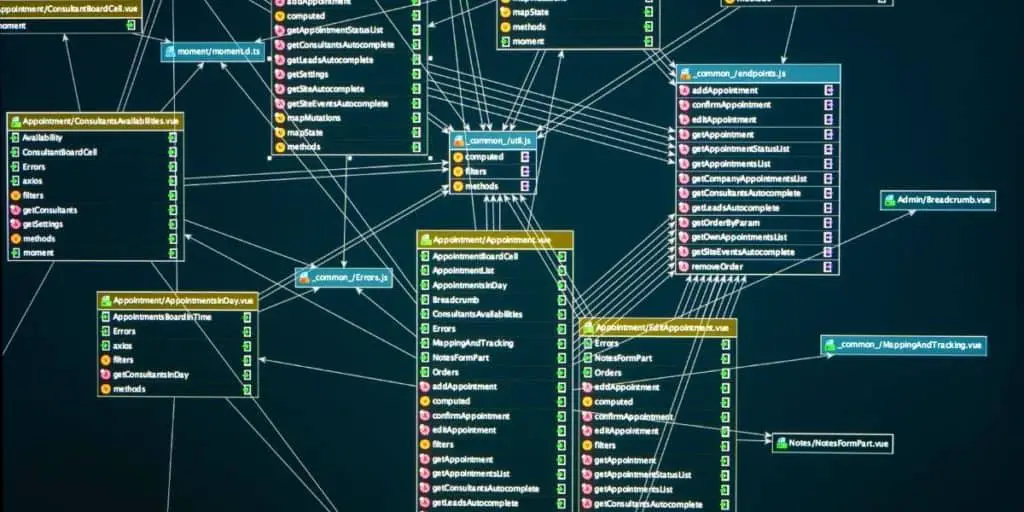If you work with relational databases, you may be wondering if SQL is the only available database language. Are there any viable alternatives to SQL?
SQL is not the only database language used to manage data. However, with two international standardization bodies adopting it as a standard for querying relational databases, it has become the universal standard. For non-relational databases, there are other querying language alternatives.
If you are interested in learning about alternative querying languages that could be used in non-relational databases or wish to find out more about the different SQL variations for relational databases, read on.
Important Sidenote: We interviewed numerous data science professionals (data scientists, hiring managers, recruiters – you name it) and identified 6 proven steps to follow for becoming a data scientist. Read my article: ‘6 Proven Steps To Becoming a Data Scientist [Complete Guide] for in-depth findings and recommendations! – This is perhaps the most comprehensive article on the subject you will find on the internet!
Table of Contents
The Difference Between Relational and Non-Relational Databases
To understand why SQL has become the de facto database language for relational databases, you must understand the difference that relational databases have with non-relational databases.

In the early days of computing, the first databases were non-relational. All data was stored in a single container. In other words, unlike modern relational databases that house data in different tables and rows across multiple databases, the non-relational database kept everything in a single table.
As a result, attempting to query data within the same table became cumbersome. Imagine if you kept your clothes all in a single huge pile. Every time you needed to coordinate an outfit, you would have to sort through countless amounts of clothes.
The same was true with the early non-relational databases and data querying. It required a lot of time and computing power to program the relationships necessary to efficiently query data related to each other.
As computing power and data storage hardware became more extensive and more efficient, relational databases became more practical and started to displace non-relational models. Now that data was being stored in a relational model, a querying language was necessary to interact with the data. That need resulted in the development of SQL.
Why Is SQL the Sole Option for Querying Relational Databases?
With the need for a language such as SQL established, the question may remain, as necessary as it was, how did it become so pervasive? How did it become, for all essential purposes, the sole option for querying relational databases?
While having a common language can bring about efficiencies in learning and training, those reasons alone are rarely sufficient to curtail variety.
What contributed immensely to SQL’s rise to becoming the query language of choice was its adoption as a standard by both the American National Standards Institute (ANSI) and the International Organization for Standardization (ISO) in 1986 and 1987. As a result, database systems in companies of all sizes started to conform to these protocols.
Why Are There Different Instances of SQL?
While SQL sets the standard for querying and manipulating data in relational database systems, SQL has different instances in existence. These are commonly referred to as SQL dialects. While all of them conform to the standardization organizations’ standards, different vendors’ database systems use slightly different SQL variants.
Yes, they all have SQL in common, but syntax or commands may differ between different dialects. In a way, having different SQL dialects in existence has helped SQL achieve its position of dominance as the querying language for relational databases. It allows for effective use across a variety of different use-case scenarios.
The reason that a standardized language such as SQL needs different dialects is due to the fact is that the relational database model did not solve all of the issues regarding data access. Different database vendors needed to address the individual requirements of their clients. To accommodate these gaps in standard SQL is how the different SQL dialects came into being.
However, the differences were so nuanced that knowledge of one dialect easily transposed to another. In the end, SQL remains the universal standard for relational databases.
Is SQL Equally As Dominant for Non-Relational Databases?
Non-relational databases have started to come back into favor because the data analysis required for machine learning and artificial intelligence development requires a vast amount of data to be processed and analyzed. Having such large amounts of data stored in so many different tables, databases, systems, and physical locations can become a burden—even for relational databases with SQL.
While relational databases in conjunction with SQL are very efficient, these efficiencies in data access and manipulation begin to break down the more extensive the volume of data that has to be queried, especially when stored across different locations.
To reduce the processing times and the computing power required to process vast amounts of data, keeping the data close, ideally in a single location, makes sense. It cuts down on the number of computing resources required and expedites the return of results. You can expedite data scaling and accomplish more with less computing power.
This renaissance in non-relational databases—commonly referred to as NoSQL or non-SQL databases—has also increased use in query languages other than SQL. These alternative languages include:
- SPARQL. It can be used to access and manipulate data stored in a database using the RDF format. You can also use it with many graph databases.
- Gremlin. It supports both imperative and declarative queries. It is developed by Apache TinkerTop.
- XQuery. It is used to query data held in XML form. It can also be used to query other data formats through the use of extensions.
- AtomSpace. It is a query language used to access and manipulate data in the database of the same name.
- Cypher. Initially intended for use with NeoJ4 databases, it is now an open project. Since it is based on the property graph model, it is well suited for non-relational databases.
One of the reasons for the greater diversity in query languages for NoSQL databases compared to relational databases is because there are different data models in use by NoSQL databases. The most common data models include key-value store, column-oriented, document-oriented, and graph databases.
However, due to the pervasiveness of SQL, some NoSQL databases do accommodate SQL through the use of extensions or by emulating SQL’s syntax in their querying languages.
Is SQL Likely To Remain Dominant in the Future?
With the expansion of machine learning and artificial intelligence development, the increasing use of non-relational databases is likely to increase. However, this does not necessarily mean that the essential querying role of SQL is going to fade.

While NoSQL databases will continue to grow, it is significant to note that even though many currently use other declarative querying languages to engage with their data, many of these also support SQL compatible queries.
It means that even though the nature of the data modeling involved is radically different from that of a relational database, you could still use SQL syntax and command structure in some NoSQL databases.
For the short and mid-term, this indicates that SQL knowledge will still play a central role in querying and interacting with data across different types of databases. Whether it is in its current role, as the “only player in town” for relational databases, or as a primary influencer in the syntax used by other alternatives, SQL is not likely to be displaced.
Author’s Recommendations: Top Data Science Resources To Consider
Before concluding this article, I wanted to share few top data science resources that I have personally vetted for you. I am confident that you can greatly benefit in your data science journey by considering one or more of these resources.
- DataCamp: If you are a beginner focused towards building the foundational skills in data science, there is no better platform than DataCamp. Under one membership umbrella, DataCamp gives you access to 335+ data science courses. There is absolutely no other platform that comes anywhere close to this. Hence, if building foundational data science skills is your goal: Click Here to Sign Up For DataCamp Today!
- IBM Data Science Professional Certificate: If you are looking for a data science credential that has strong industry recognition but does not involve too heavy of an effort: Click Here To Enroll Into The IBM Data Science Professional Certificate Program Today! (To learn more: Check out my full review of this certificate program here)
- MITx MicroMasters Program in Data Science: If you are at a more advanced stage in your data science journey and looking to take your skills to the next level, there is no Non-Degree program better than MIT MicroMasters. Click Here To Enroll Into The MIT MicroMasters Program Today! (To learn more: Check out my full review of the MIT MicroMasters program here)
- Roadmap To Becoming a Data Scientist: If you have decided to become a data science professional but not fully sure how to get started: read my article – 6 Proven Ways To Becoming a Data Scientist. In this article, I share my findings from interviewing 100+ data science professionals at top companies (including – Google, Meta, Amazon, etc.) and give you a full roadmap to becoming a data scientist.
Conclusion
SQL is not the only query language for databases. However, for relational databases, it is the preeminent language. If you were dealing solely with these types of databases, SQL or one of its dialects would be your only option on a practical level.
However, the expanding use of non-relational databases has brought other querying languages into use. These languages are similar to SQL in that they are declarative. Additionally, some use syntax similar to SQL. Some NoSQL databases go as far as offering extensions to run SQL queries.
BEFORE YOU GO: Don’t forget to check out my latest article – 6 Proven Steps To Becoming a Data Scientist [Complete Guide]. We interviewed numerous data science professionals (data scientists, hiring managers, recruiters – you name it) and created this comprehensive guide to help you land that perfect data science job.
Affiliate Disclosure: We participate in several affiliate programs and may be compensated if you make a purchase using our referral link, at no additional cost to you. You can, however, trust the integrity of our recommendation. Affiliate programs exist even for products that we are not recommending. We only choose to recommend you the products that we actually believe in.
Recent Posts
Data science has been a buzzword in recent years, and with the rapid advancements in artificial intelligence (AI) technologies, many wonder if data science as a field will be replaced by AI. As you...
In the world of technology, there's always something new and exciting grabbing our attention. Data science and analytics, in particular, have exploded onto the scene, with many professionals flocking...
